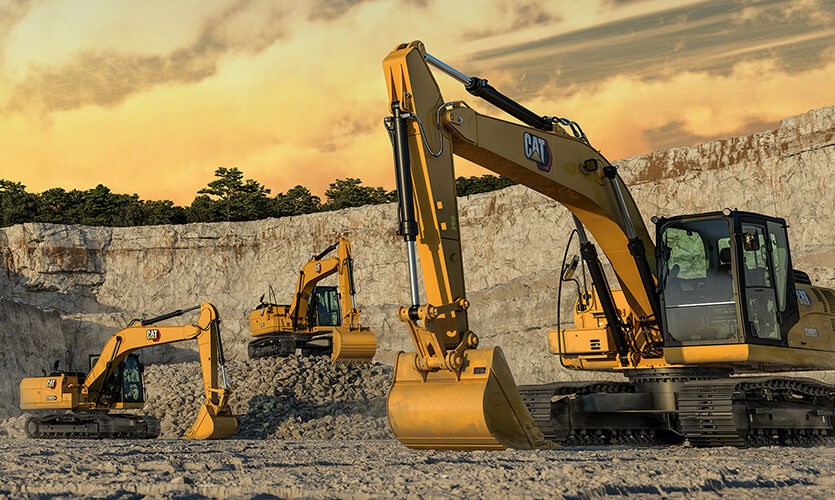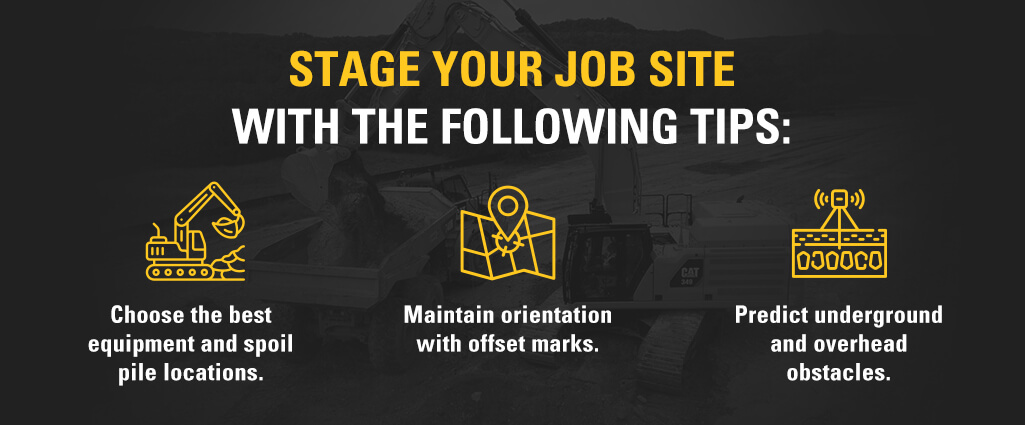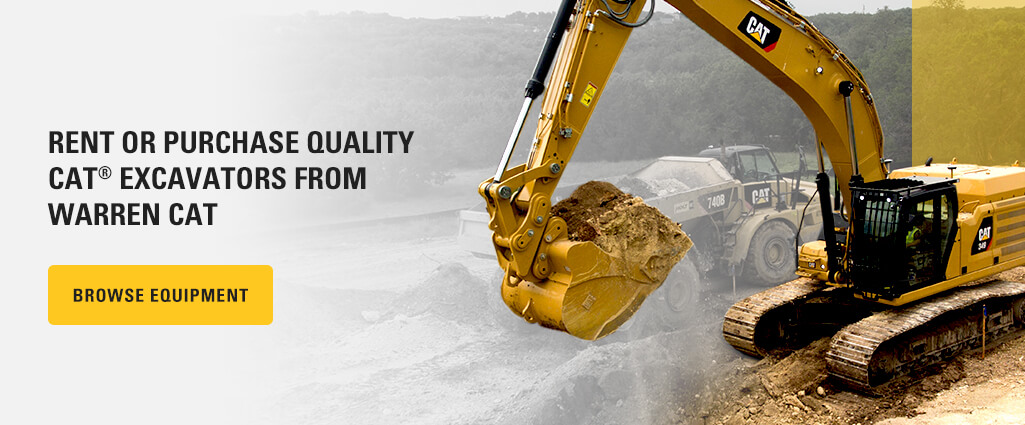Maximizing Efficiency With Excavators: Essential Tips
 May 29, 2025
May 29, 2025
Optimizing excavator use can maximize efficiency and boost profits. Excavators are highly versatile due to their many capabilities. By utilizing a wide variety of available attachments, you can use a single excavator for several different tasks, enabling you to do more with fewer machines. Newer, enhanced coupler systems help workers switch between tasks faster and more easily.
You can transform how your team approaches projects with proper job site staging, digging strategies and attachments. Operating an excavator with the right techniques enables equipment operators to complete tasks faster, helping you save time and money.
1. Take Advantage of Versatile Excavator Capabilities
Take advantage of an excavator’s full breadth of capability. If you only use your excavator for one type of task, you may be missing out on its additional uses and benefits. Consider the following types of work you can complete with this versatile machine:
- Demolition: An excavator can be used to demolish commercial and residential structures. Attachments such as hydraulic thumbs, concrete crushers, shears and hydraulic hammers can help your team complete demolition work faster.
- Debris removal: Use an excavator and a grab attachment to remove debris such as material scraps, rubble and asphalt from job sites.
- Digging: An excavator’s standard bucket teeth facilitate easy digging and soil scooping. Attachments such as augers and grading buckets can also boost excavator digging efficiency. These attachments are especially beneficial when digging and preparing foundations, pipelines and fences.
- Drilling: Equip your excavator with an auger attachment to drill holes in the ground. This attachment allows you to create precise holes and break through hard ground.
- Earthmoving: An excavator can efficiently clear ground materials such as soil, rocks and vegetation for level foundation laying.
- Trenching: Use a trencher attachment to dig precise trenches. Excavator trencher attachments are excellent for underground pipes, drainage systems and utilities.
- Grading: A backfill blade enables your excavator to shape ditches, smooth slopes and reshape terrain.
- Material handling: An excavator can move various building materials across your worksite. Bucket and thumb attachments help move materials such as steel, purlins and concrete beams.
- Concrete and asphalt breaking: An excavator’s strength and available hammer attachments enable you to break through hard materials such as concrete, rocks and asphalt.
- Landscaping: An excavator is an excellent option for landscaping tasks. Various attachments help workers dig, move rocks, remove trees and shape terrain.
- Snow removal: Excavators can also help remove snow from job sites, roads and properties.
2. Rent or Invest in the Right Attachments
When you have the right attachments, you can switch between tasks quickly and easily. Keep attachments on hand for specific jobs or schedule attachment rentals to ensure you have what you need when you need it.
Using attachments of the right size is also essential. Before choosing an attachment, consider material density and maximum reach to ensure it can handle the job. Jobs with heavier materials may require a larger bucket, while other tasks may require a longer reach. Different boom, bucket and arm configurations can optimize excavator capabilities.
It is also important to match attachments to your excavator’s hydraulic system and power output. Pairing the right attachment with your excavator helps optimize performance, reduce machine wear and decrease fuel costs.
3. Stage Your Job Site
Mapping your job site and setting it up properly increases worker safety and prevents project delays. You can stage your job site with the following tips:
- Choose the best equipment and spoil pile locations: According to OSHA, you must keep excavated materials and equipment at least 2 feet away from excavation edges. Determine the safest areas for your equipment and spoil piles so your workers can excavate areas quickly and with minimal challenges.
- Maintain orientation with offset marks: Plan your digging tasks to avoid blocking or boxing your equipment in. String or paint lines help operators keep an excavator in alignment, ensuring it follows the correct path according to your reference guides.
- Predict underground and overhead obstacles: It is essential to consider underground and overhead obstacles before operating an excavator. Predetermine obstacles to prevent operational delays and potential accidents .

4. Maintain Your Job Site
Using an excavator on an unkempt project site can create unnecessary efficiency issues. Keep your job site clean and organized to prevent roadblocks from damaging your excavator or delaying work. Remove debris when necessary and move excavated materials when they start to accumulate. This helps your workers complete tasks on schedule.
5. Use Slow, Steady Operation on Slopes
Slow, steady operation and safe positioning are essential when working on slopes, so you should take the proper precautions according to your user’s manual. Positioning your equipment so its tracks line up vertically with the hill helps prevent tip-overs, and working slowly prevents the excavator’s swing motor from overworking. Use smaller bucket loads to reduce equipment wear, prevent breakdowns and keep your operations on schedule.
6. Optimize Your Digging Strategy
Gradual digging from the top layer is more efficient than digging from the bottom up. Start digging a top-layer marking path first and gradually dig the layers beneath it. This strategy helps you remove soil faster to save fuel and time.
7. Adjust Your Excavator’s Blade Angle
Your excavator’s blade angle can also affect digging efficiency. Adjust your blade to accommodate each task’s needs based on soil conditions and terrain.
8. Maintain Your Excavator
The following regular maintenance tasks can help your excavator operate as efficiently as possible:
- Fluid checks: Proper fluid levels help maintain an excavator’s longevity and efficiency. Regularly check your excavator’s engine oil, hydraulic system oil and coolant.
- Filter and oil changes: Change oil according to your equipment’s user manual or when it appears low. You must also inspect and change the engine and air filters when necessary to prevent debris from entering the machine’s engine.
- Cooling system maintenance: Check your excavator’s coolant hoses for airflow levels and leaks. This helps your system remain cool to prevent damage from excessive heat.
- Track tension inspection: An excavator requires proper track tension to operate efficiently. Check the tracks to prevent them from becoming too tight or too loose.
- Water separator drainage: Daily water separator drainage removes trapped water, preventing steam from corroding your excavator.
Rent or Purchase Quality Cat® Excavators From Warren CAT
Operating a quality, dependable excavator can help you boost efficiency and productivity on your worksites. Warren CAT carries Cat excavators for durability, reliability and efficiency. Whether you want to rent an excavator or purchase a new machine, Warren CAT can help you find what you need. We also carry a wide array of excavator attachments to help you get the most use out of your equipment.
Find a sales representative near you or contact us to learn more about our high-quality equipment.

